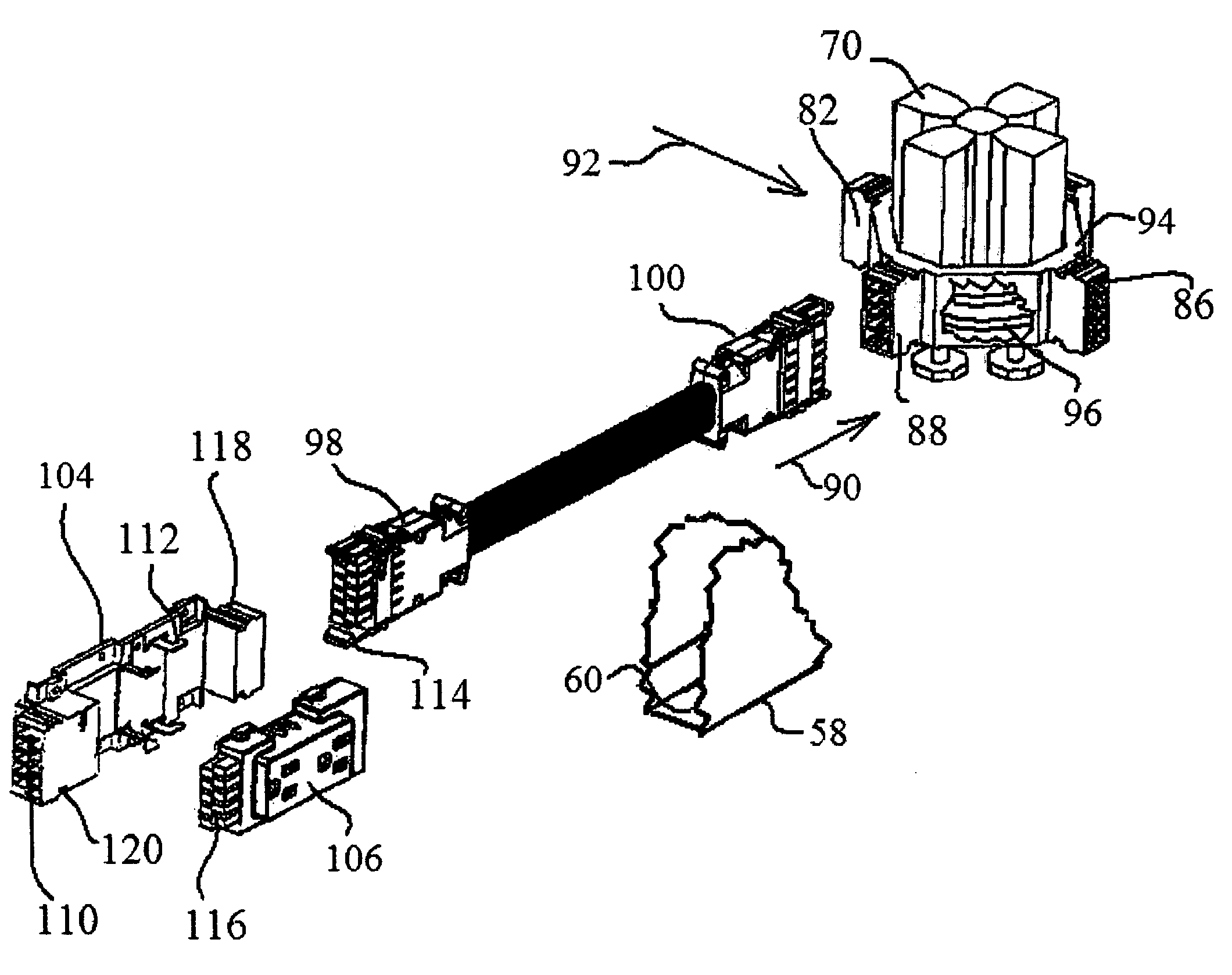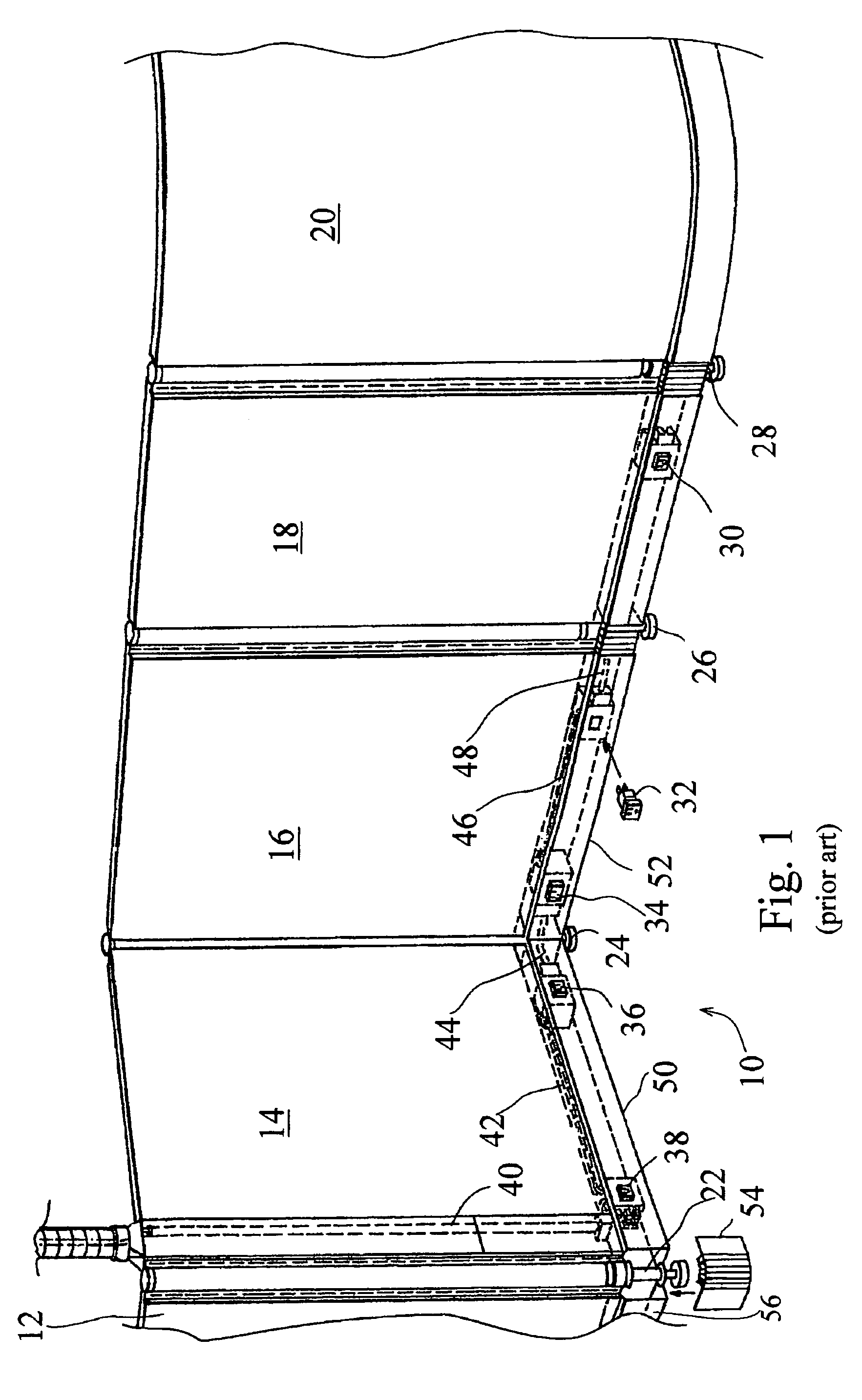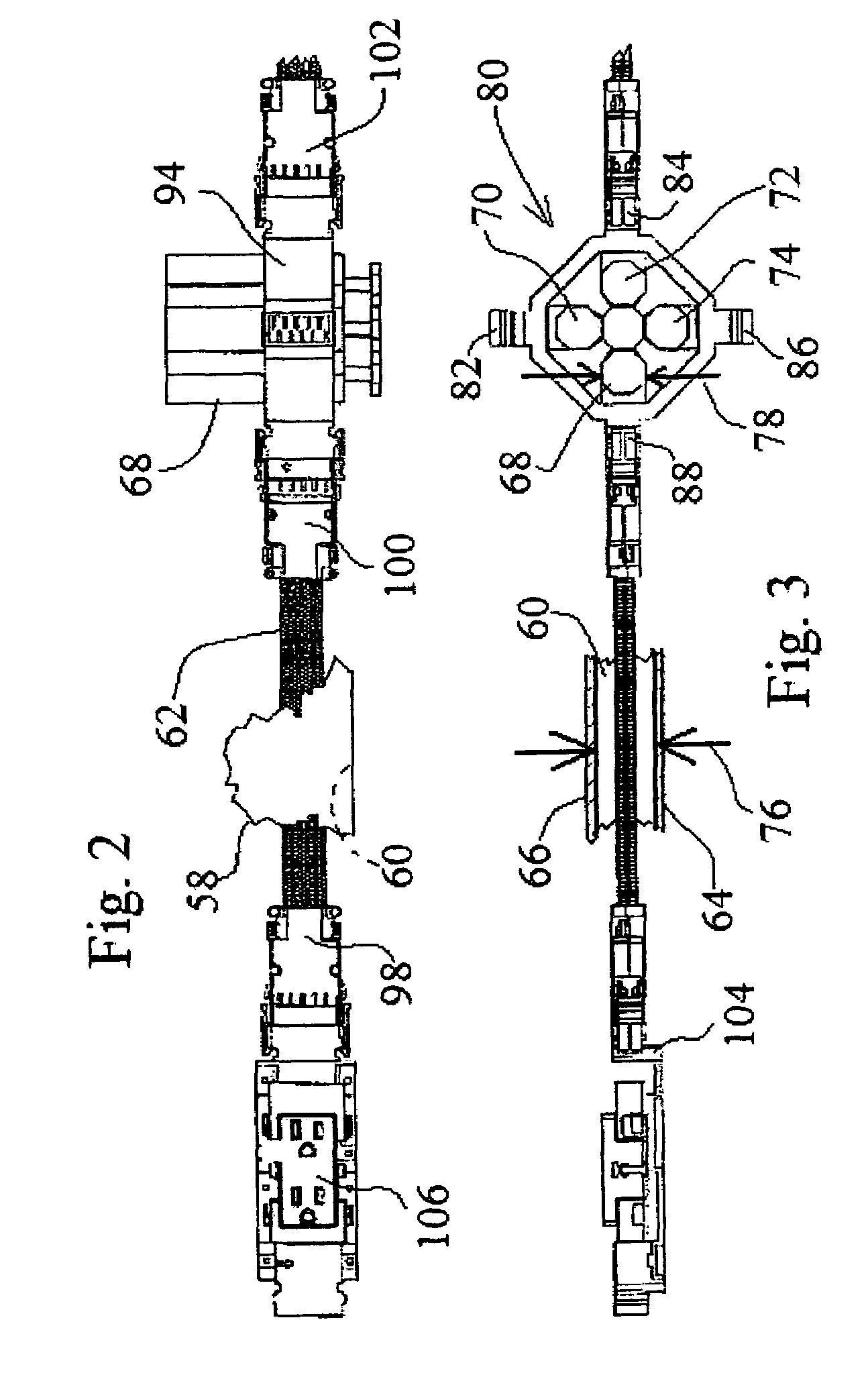Method of branching power around an obstacle
a technology of branching power and obstacles, applied in the direction of coupling device connections, coupling device details, connection contact material, etc., can solve problems such as forming electrical connections between adjacent panels
- Summary
- Abstract
- Description
- Claims
- Application Information
AI Technical Summary
Benefits of technology
Problems solved by technology
Method used
Image
Examples
Embodiment Construction
[0040]Referring now to the drawings, and more particularly to FIG. 1, there is shown an illustrative office or workspace divider panel or partition system 10 which includes a series of wall sections 12, 14, 16, 18 and 20 which rest on posts or supports 22, 24, 26 and 28. Individual wall panels are electrified, that is, provided with electrical outlets or receptacles such as 30, 32, 34, 36 and 38 which are provided with electrical energy from source above by a power downfeed line 40. The individual outlets are electrically interconnected by jumpers such as 42, 44 and 46. Jumper 48 is shown as providing power upwardly from outlet 32 to a utilization device located overhead or higher on a wall panel. Jumper 48 could extend to other electrical components such as receptacle 30 as desired. The electrical outlets and interconnecting jumpers are disposed in panel raceways such as 50, 52 and 56 which interconnect to form a channel which extends along the bottom edges of the several panels. N...
PUM
 Login to View More
Login to View More Abstract
Description
Claims
Application Information
 Login to View More
Login to View More - Generate Ideas
- Intellectual Property
- Life Sciences
- Materials
- Tech Scout
- Unparalleled Data Quality
- Higher Quality Content
- 60% Fewer Hallucinations
Browse by: Latest US Patents, China's latest patents, Technical Efficacy Thesaurus, Application Domain, Technology Topic, Popular Technical Reports.
© 2025 PatSnap. All rights reserved.Legal|Privacy policy|Modern Slavery Act Transparency Statement|Sitemap|About US| Contact US: help@patsnap.com



